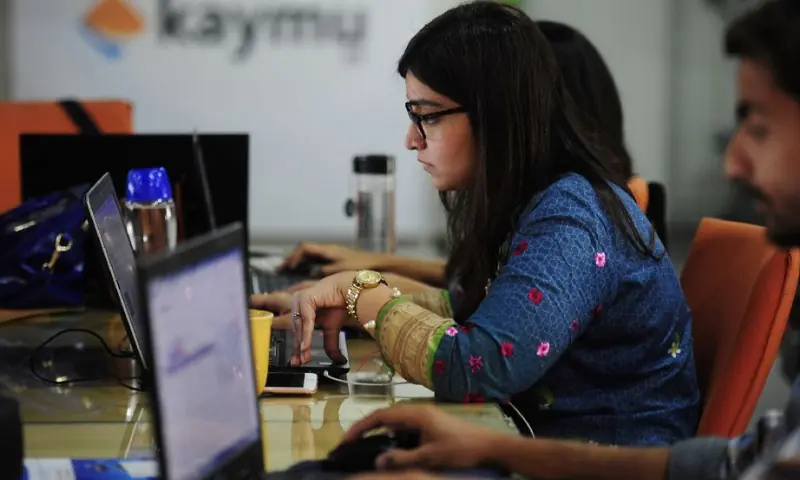ISLAMABAD: The rise of generative artificial intelligence and widespread digitalization could displace men and women from their jobs, with the latter likely to experience a significantly higher rate of impact, thereby worsening gender inequalities in the workplace, a United Nations policy update warns.
Globally, 27.6 percent of jobs held by women are potentially exposed to automation or major changes from generative AI (GenAI), compared to 21.1 percent of jobs held by men, according to the UN Department of Social Affairs (DESA) report.
These risks arise from structural inequalities, gender biases embedded in technology, and unequal access to digital resources.
The impact is expected to be felt most acutely in high- and upper-middle-income countries, where women are concentrated in white-collar jobs, education and public administration, sectors with high exposure to GenAI.
Urges governments to close the digital gender gap by ensuring affordable internet and digital skills training for women
This trend follows a historical pattern. The early stages of digitalization, which focused on the automation of routine and manual tasks, also disproportionately affected women.
Between 2000 and 2019 in the United States, 3.5 million administrative support and assembly line jobs held by working-age women were lost, compared to one million jobs held by men.
“Job displacement is one of the main challenges,” the UN report says, noting that while previous automation affected low-skilled tasks, GenAI is “expected to have more far-reaching effects” by automating tasks at various skill levels.
A critical factor compounding the problem is the underrepresentation of women in the technology sector itself.
The report highlights that the low participation of women in science, technology, engineering and mathematics (STEM) fields can “significantly intensify gender inequalities.” The proportion of women with STEM skills remains below a third in a sample of 73 countries.
This gap is worrying not only for current employment but also for the future, as artificial intelligence systems trained on biased data sets risk “perpetuating and amplifying discrimination in hiring processes and other critical decisions,” the report warns.
While greater diversity in technology teams is not a complete solution, the analysis suggests that more diverse teams are better positioned to identify and mitigate the risks of biased technology.
Despite the significant risks, digitalization also presents new opportunities for women’s economic inclusion.
New work models, such as remote work, teleworking, and the gig economy, can help women overcome traditional barriers, such as rigid schedules and caregiving responsibilities.
The UN macro analysis says that by “enabling more flexible and innovative employment options, digitalization can drive greater economic inclusion and empowerment of women.”
In developing countries, many women have benefited from digital platforms and e-commerce, but a persistent digital gender gap continues to exclude many from these opportunities.
To counter risks and seize opportunities, the UN urges governments to prioritize closing the gender digital divide by expanding affordable Internet access, providing digital skills training for women and girls, and promoting women’s employment and leadership in the technology sector.
Published in Dawn, October 19, 2025







